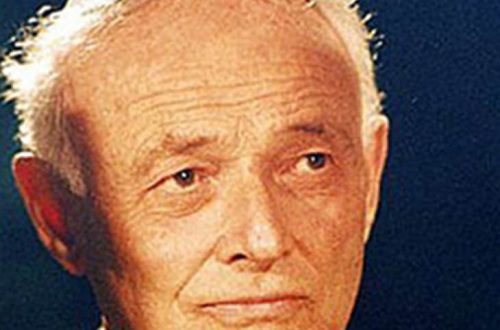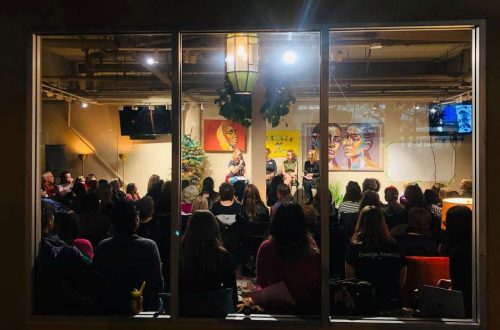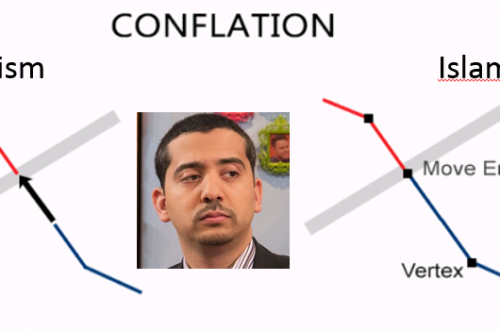Senator John Edwards of North Carolina, whose campaign for the Democratic nomination for president seems to be gathering steam, has been speaking lately about America as a nation divided in two:
Today, under George W. Bush, there are two Americas, not one: One America that does the work, another America that reaps the reward. One America that pays the taxes, another America that gets the tax breaks. One America that will do anything to leave its children a better life, another America that never has to do a thing because its children are already set for life. One America — middle-class America – whose needs Washington has long forgotten, another America – narrow-interest America – whose every wish is Washington’s command. One America that is struggling to get by, another America that can buy anything it wants, even a Congress and a President.
Edwards speaks about “two tax systems,” “two health care systems,” “two education systems,” “two governments” — one for the “powerful” and the “privileged,” the other for “the rest of us.”
There’s some rhetorical excess here, but not much. For example there’s the current economic recovery, which so far seems to be benefitting one America more than another. In a piece on the uneven recovery in Canton, Ohio, The Washington Post reported:
Nationally, the two-tiered economic gains appear to be playing out on a grand scale. Holiday sales at Neiman Marcus department stores were up nearly 13 percent over the holidays compared with the previous year. Tiffany’s sales jumped 16 percent, as the affluent rewarded themselves for their upturn. Dana Telsey, chief retail analyst at Bear, Stearns & Co., calls it “self-gifting.”
Yet Wal-Mart, which serves a less glamorous clientele, posted gains of only 3.9 percent, barely meeting analysts’ expectations.
On Wall Street, bonuses will be up 20 to 30 percent from last year, according to industry experts. Alan G. Hevesi, the New York state comptroller, recently said he expects Wall Street bonuses to total $10.7 billion for 2003, an average of $66,800 per employee.
But for hourly workers elsewhere, average wages last year rose by 26 cents, or 1.7 percent, the Labor Department said last week.
The Dow Jones industrial average rose 25 percent in 2003, a boon to those with investments. At the same time, consumer debt such as credit cards and auto loans hit a record $1.98 trillion in October, $18,700 per household, the Federal Reserve reported this month. The number of past-due credit card accounts rose to an all-time high of 4.09 percent from July through September, according to the American Bankers Association.
The number of personal bankruptcies during the 12 months ending Sept. 30, 2003, rose to 1.66 million, up 7.4 percent from the 1.54 million filings in fiscal year 2002 and another record.
The economy grew at a remarkable 8.3 percent annual rate in the third quarter of 2003, but by October, there were 2.8 unemployed people for every job opening, up from 2.51 a year earlier and 2.25 in 2001, according to the Economic Policy Institute. Unemployment rates for managers and professionals stayed steady last year, at just under 3 percent.
But jobless rates have risen steadily for lower-paid service occupations, from 6.4 percent in 2001 to 6.6 percent in 2002 to 7 percent last year. Unemployment in production and transportation jobs finished the year at 7.2 percent.
In other words, more than two years into the current recovery, we’re still waiting for the trickle-down effect, the rising-tide-lifts-all-boats effect, or whatever they’re calling it these days. And we’re about 1.6 million short of the 1.8 million new jobs the Bush administration forecast for the second half of 2003.
Which brings us back to Edwards’s point, hardly a new one. Writing in the early 1960s about the wide gap in quality between public schools and hospitals and their private counterparts, the great New Yorker journalist A.J. Liebling remarked:
I often wonder what would have happened if all men of military age hadn’t been compelled to go into the same public armed services during the most recent war, and if there had been a nice private auxiliary army available for the sons of large taxpayers. I believe that rations, clothing, medical attention, and pay would have been lousy in the ranks of the public army. To compensate for these drawbacks, discipline would have been much more severe, and the newspapers would have been full of editorials against coddling public soldiers.
There was no attempt to run war on that system, and I sometimes doubt that we should run peace that way.
For a few weeks after September 11, 2001, there was a real feeling of community in this country. The attack on some of us was an attack on all of us. There was a sense that we were all in this together, that we were all responsible for one another. Suddenly self-absorption, self-interest, cynicism and complacency seemed unfashionable.
The author George Packer, who was living in New York at the time, wrote:
Everyone wanted to be of use and no one knew how, as if citizenship were a skilled position for which none of us had the right experience and qualification. People seemed to be feeling the same thing: They had not been living as they would have liked; the horrors of the day before had woken them up; they wanted to change.
That feeling dissipated fairly quickly as government officials urged everyone to get back to normal. But it was a feeling worth holding onto, even if it took a catastrophe to awaken it. I supported President Bush’s military response to 9/11, but I can’t forgive him for letting that moment of national solidarity and national purpose go to waste.
It shouldn’t take a catastrophe to make us feel the way we did during those few weeks. Perhaps John Edwards or one of the other Democratic candidates can help us recapture and sustain what we felt back then.


